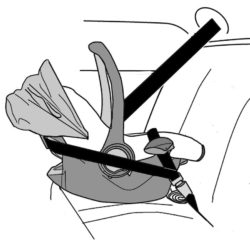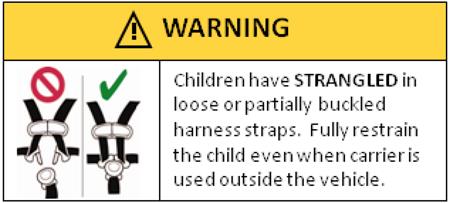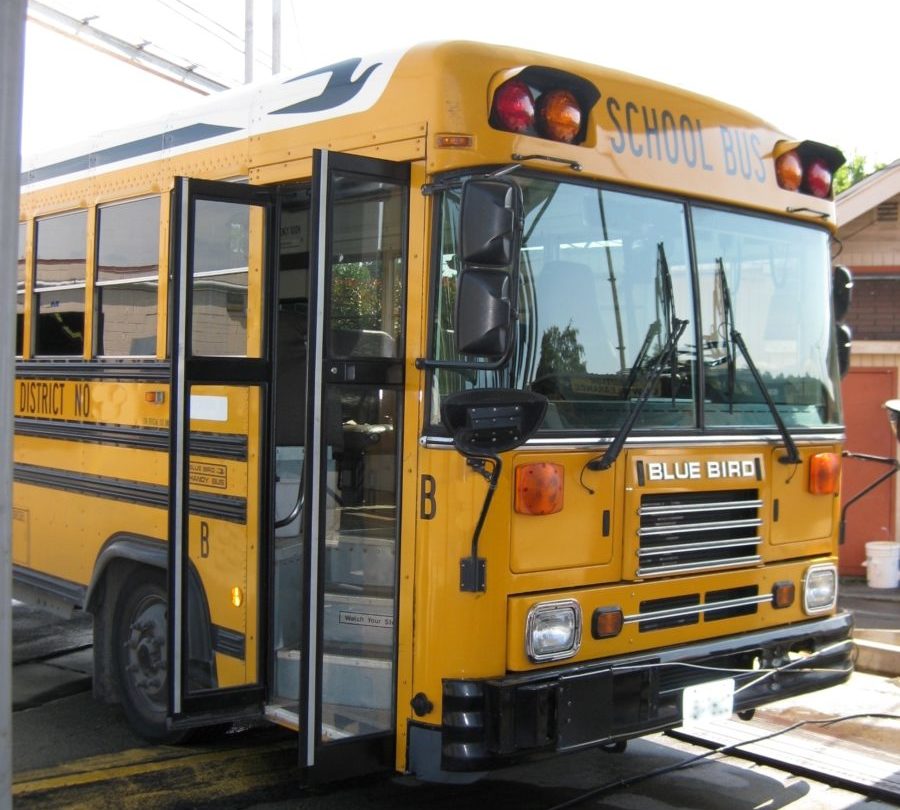A new study of 267 newborn infants who were discharged from Oregon Health and Science University Hospital between November 2013 and May 2014 shows that almost all (93 percent) of the parents made significant errors in CR use or installation.
Topic: Using Car Seats, Booster Seats, and Seat Belts
Using car seats, boosters, and set belts for children of all ages.
What CPSTs, Caregivers Should Know About European Belt Routing
European belt routing for rear-facing CRs is not new here in the U.S. For many years there have been at least a few RF-only models with this installation option. However, with growing global influence in the CR marketplace, models with this option have been on the rise in recent years. This article takes a closer look at this installation method.
Read More from “What CPSTs, Caregivers Should Know About European Belt Routing”
New Requirements for RF-Only CRs, Other Hand-Held Carriers
Did you know that NHTSA is not the only government agency that oversees CRs? That’s because RF-only CRs with handles are also considered carriers. To enhance the safety of carriers, a new Consumer Products Safety Commission (CPSC) standard goes into effect on June 6, 2014. It applies to RF-only CRs as well as any other rigid- or semi-rigid-sided, hand-held carrier (i.e.: portable cradles and Moses baskets). Watch for this new label to appear soon on the padding around the head area of all RF CRs. It can be used to introduce caregivers to the topic of appropriate use of CRs, both in and out of the vehicle.
Read More from “New Requirements for RF-Only CRs, Other Hand-Held Carriers”
Call to Industry and Government: Bring Rear-Seat Safety to Its Full Potential
Although it is always safer to ride in a vehicle’s back seat, the relative benefits today decline for children as they age, particularly after they have transitioned out of a CR. This is the overall finding of a Center for Injury Research and Prevention (CIRP) study of the state of science on the safety of children and youth in the rear seats of vehicles. CIRP, a group that is part of The Children’s Hospital of Philadelphia, published the findings in its April 2013 CPS Issue Report. “Optimizing the Rear Seat for Children” includes extensive review of the scientific literature relevant to this subject since 2001.
Read More from “Call to Industry and Government: Bring Rear-Seat Safety to Its Full Potential”
Today’s CRs More Often Outgrown by Height Than Weight
When considering how long a CR can be used, the tendency is to focus primarily on weight limits. But given the quantity of high-weight-harness (HWH) models on today’s market, most children will outgrow a CR by height before reaching the weight limit—sometimes long before.
It wasn’t always this way. Within recent memory, weight was nearly always the limiting factor, since infant CRs had 22-pound rear-facing limits, and forward-facing harnesses uniformly could be used to 40 pounds. But CRs today have been strengthened and are rated to be used at much higher weights for either mode, so the mind-set must shift to expecting most CRs to be outgrown by height.
Read More from “Today’s CRs More Often Outgrown by Height Than Weight”
More on Angle: Gravity-Based Indicators, Other Considerations
In the last two issues, SRN ran articles exploring CR angle situations of following the “level-to-ground” line and considering issues related to touching the back of the front vehicle seat. During our research, we noted a handful of other interesting angle-related issues worth mentioning.
Read More from “More on Angle: Gravity-Based Indicators, Other Considerations”
Consider the Continuum of Occupant Safety
From Car Seat to Driver’s Seat
Dr. Winston is a board-certified practicing pediatrician, biomechanical engineer, and clinical researcher. She is the founder and co-scientific director of The Center for Injury Research and Prevention at The Children’s Hospital of Philadelphia (CHOP).
Since 1997, CPSTs have helped families safely navigate occupant protection for children with measurable results. Motor vehicle crashes are no longer the leading cause of death for children under age 4.* ((Editor’s Note: Statistics on leading causes of child death and injury are available from the Center for Disease Control.)) We have tracked steady increases in appropriate restraint use and a corresponding drop in fatalities—from about 2,000 per year in the 1990s to fewer than 1,100 in 2009 for children less than 16 years old.
Another Angle on Recline Angles:
When the CR Touches the Front Vehicle Seatback
Part one of this series on installation angles for rear-facing CRs, which explored using the level-to-ground line to determine the appropriate angle, ran in the last issue of SRN. This article considers another issue related to rear-facing CR angle: things to consider when the top of the CR contacts the vehicle front seatback. Unlike the issue of understanding how to read the level-to-ground line, which depends solely on the CR manufacturer as the source of guidance, this situation requires considering the advice of both the CR and vehicle manufacturer.
Read More from “Another Angle on Recline Angles:”
Exploring Some Angles of the Angle Issue
(This article, part one of a two-part series, looks at how proper rear-facing angle is assessed, especially for older children, and how to use “level to ground” lines on labels. In the next issue, SRN will explore issues related to rear-facing CRs touching front seatbacks.)
After many years of knowing, from research and Swedish crash experience, that keeping children rear facing as long as possible is best, the CPS community now has strong support for this best practice from the American Academy of Pediatrics’ April policy statement on child passenger safety. Armed with that respected organization’s advice to keep kids rear facing until at least age 2, if possible, or even longer if they still fit, the community is doubly blessed by the accessibility of numerous CR models that will hold children up to these higher weight limits. Such models are even available in today’s marketplace across all price levels.
Federal Motor Vehicle Safety Standards—School Bus Related
Why No Boosters on Buses?
In October 2008, NHTSA published the “Federal Motor Vehicle Safety Standards; Seating Systems, Occupant Crash Protection, Seat Belt Assembly Anchorages, School Bus Passenger Seating and Crash Protection” final rule, the last components of which will take effect on October 21, 2011. Important among these is the requirement for new buses of 10,000 pounds gross vehicle weight or less to be equipped with lap-shoulder belts, rather than lap-only belts, in all positions.
Having access to lockable, standardized lap-shoulder seat belts on these smaller buses may make installation of conventional CRs easy on most buses so equipped. However, caregivers and advocates are often surprised to learn that best practice is to NOT use a booster on a school bus, even when a lap-shoulder belt is available and the child would normally ride in a booster in the family vehicle.
Read More from “Federal Motor Vehicle Safety Standards—School Bus Related”



